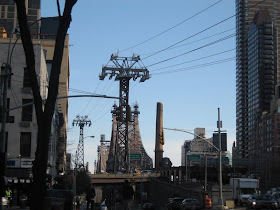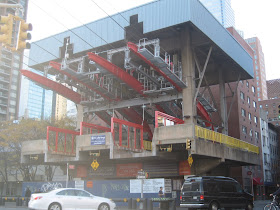From e-Flux (DO IT)
Living as Form
September 24–October 16, from 12–8 PM Thursday-Sunday
Historic Essex Street Market, southeast corner of Essex Street and Delancey Street (entrance on Delancey), NYC
Creative Time Summit 3: Living as Form
September 23
NYU Skirball Center, 566 Laguardia Place, NYC
www.creativetime.org/livingasform
www.creativetime/summit
Living as Form
September 24–October 16, 2011
Over 100 Artists and Projects, 25 Curators, and 9 New Commissions Highlighting 20 Years of Socially Engaged Art
Plus, the Third Annual Creative Time Summit to Take Place September 23
This fall, Creative Time will present Living as Form, an unprecedented, international exhibition exploring over twenty years of socially engaged cultural works that blur the forms of art and everyday life, emphasizing participation, dialogue, and community engagement. "Increasingly, we find socially engaged projects that exceed traditional categories of art by utilizing sociality, pedagogy, community outreach, architecture, publishing, and numerous other methodologies to engage the peculiar spectacle-driven thing we know as civic life. Living as Form is an attempt to take the temperature at this particular historic moment to encourage profound forms of social-based action that can alter the course of history," states Nato Thompson who conceived of the exhibition with the advice and assistance of twenty-five curatorial advisors, including Caron Atlas, Negar Azimi, Ron Bechet, Claire Bishop, Brett Bloom, Rashida Bumbray, Carolina Caycedo, Ana Paula Cohen, Common Room, Teddy Cruz, Sofia Hernández Chong Cuy, Gridthiya Gaweewong, Stephen Hobbs and Marcus Neustetter, Hou Hanru, Shannon Jackson, Maria Lind, Chus Martínez, Sina Najafi, Marion von Osten, Ted Purves, Raqs Media Collective, Gregory Sholette, Superflex, Christine Tohme, and Sue Bell Yank. Living as Form will document over 100 artists' projects in a large-scale survey show at the historic Essex Street Market building, commission nine new projects, and provide an online database of nearly 400 projects addressing this complex field of cultural production. Living as Form will be open September 24–October 16, from 12–8 PM Thursday-Sunday.
The show's opening weekend will feature participatory events and tours with artists featured in the show including nine commissioned projects located in dedicated spaces inside the Essex Street Market and the surrounding neighborhood. Featured artists include Bik Van der Pol, Carolina Caycedo, MadeIn Company presented by the Long March Project, Megawords, OurGoods, Surasi Kusolwong, Superflex, Temporary Services, and Time/Bank (Julieta Aranda and Anton Vidokle). Ranging from performances to public interventions and installations, the projects will explore topics including public shrines and ceremonies, mind/body consciousness, the dynamics of power, vertical development and air rights, and alternative economies. For more information and an updated schedule of events, visit creativetime.org/livingasform.
Audiences are invited to engage with some of the artists behind projects in the Living as Form exhibition—as well as critics, writers, and curators—at the third annual Creative Time Summit: Living as Form, on September 23, at NYU Skirball Center. The conference brings together an evolving community concerned with the political implications of socially engaged art to discuss how their work addresses pressing issues affecting our world. Expected presenters include: Alternate ROOTS, Appalshop, Common Room, Cybermohalla Ensemble, Decolonizing Architecture, Jeremy Deller, Darren O'Donnell, Laura Flanders, Theaster Gates, Hou Hanru, Jeanne van Heeswijk, Shannon Jackson, Long March Project, Alan W. Moore, My Barbarian, Neue Slowenische Kunst (NSK)/IRWIN, Ted Purves, Gerald Raunig, Navin Rawanchaikul, Katerina Šedá, Chemi Rosado Seijo, Andreas Siekmann, Mierle Laderman Ukeles, Ultra-red, United Indian Health Services, Urban Bush Women, Dan S. Wang, WochenKlausur, and Women on Waves.
Tickets to the Creative Time Summit are available at web.ovationtix.com. Living as Form is free and open to the public.
ABOUT CREATIVE TIME
Since 1974, Creative Time has presented the most innovative art in the public realm. The New York-based nonprofit has worked with over 2,000 artists to produce more than 335 groundbreaking public art projects that have ignited the public's imagination, explored ideas that shape society, and engaged millions of people around the globe.
SUPPORT
Lead project support for Living as Form and the Creative Time Summit is provided by the Annenberg Foundation, the Lily Auchincloss Foundation, the Nathan Cummings Foundation, the Danish Consulate, the Andrew W. Mellon Foundation, the Mondriaan Foundation, the National Endowment for the Arts, the Panta Rhea Foundation, the Rockefeller Brothers Fund, and the Laurie M. Tisch Illumination Fund.










































